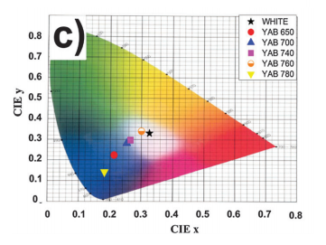
Application of oxo-manganese complex immobilized on ion-exchange polymeric film as biomimetic sensor for nitrite ions
Abstract: A biomimetic sensor based on oxo-bridged dinuclear manganese-phenanthroline complex immobilized into an ion-exchange polymeric film deposited on glassy carbon electrode was applied to detection of nitrite ions and studied according to their kinetics parameters. The cyclic voltammetry at the modified electrode in universal buffer showed a two electron oxidation/reduction of the couple Mn-IV(mu-0)(2) Mn-IV/Mn-III(mu-0)(2) Mn-III and electrocatalytic property toward nitrite oxidation with a decrease of the overpotential of 320 mV compared with the bare glassy carbon electrode. A plot of the anodic current vs. the nitrite ions concentration for potential fixed (+0.480) at the biomimetic sensor was linear in the 2.49 x 10(-6) to 9.90 x 10(-6) mol L-1 concentration range with a detection limit of 6.50 x 10(-6) mol L-1. The kinetic mechanism was derived by Michaelis-Menten, then, kinetics parameters were calculated through four methods: Lineweaver-Burke, Eadie-Hofstee, Hanes-Woolf and Nonlinear curve fitting. The best results were Michaelis-Menten rate constant = 3.42 mu mol L-1, catalytic rate constant = 0.0114 s(-1), catalytic efficiency = 3.3 x 10(3) (mol L)(-1) s(-1) and heterogeneous electrochemical rate constant = 1.15 x 10(-5) cm s(-1). (C) 2015 Elsevier B.V. All rights reserved.
Author(s): Machini, WBS; Teixeira, MFS
SENSORS AND ACTUATORS B-CHEMICAL
Volume: 217 Pages: 58-64 Published: OCT 1 2015
DOI: 10.1016/j.snb.2015.01.021




